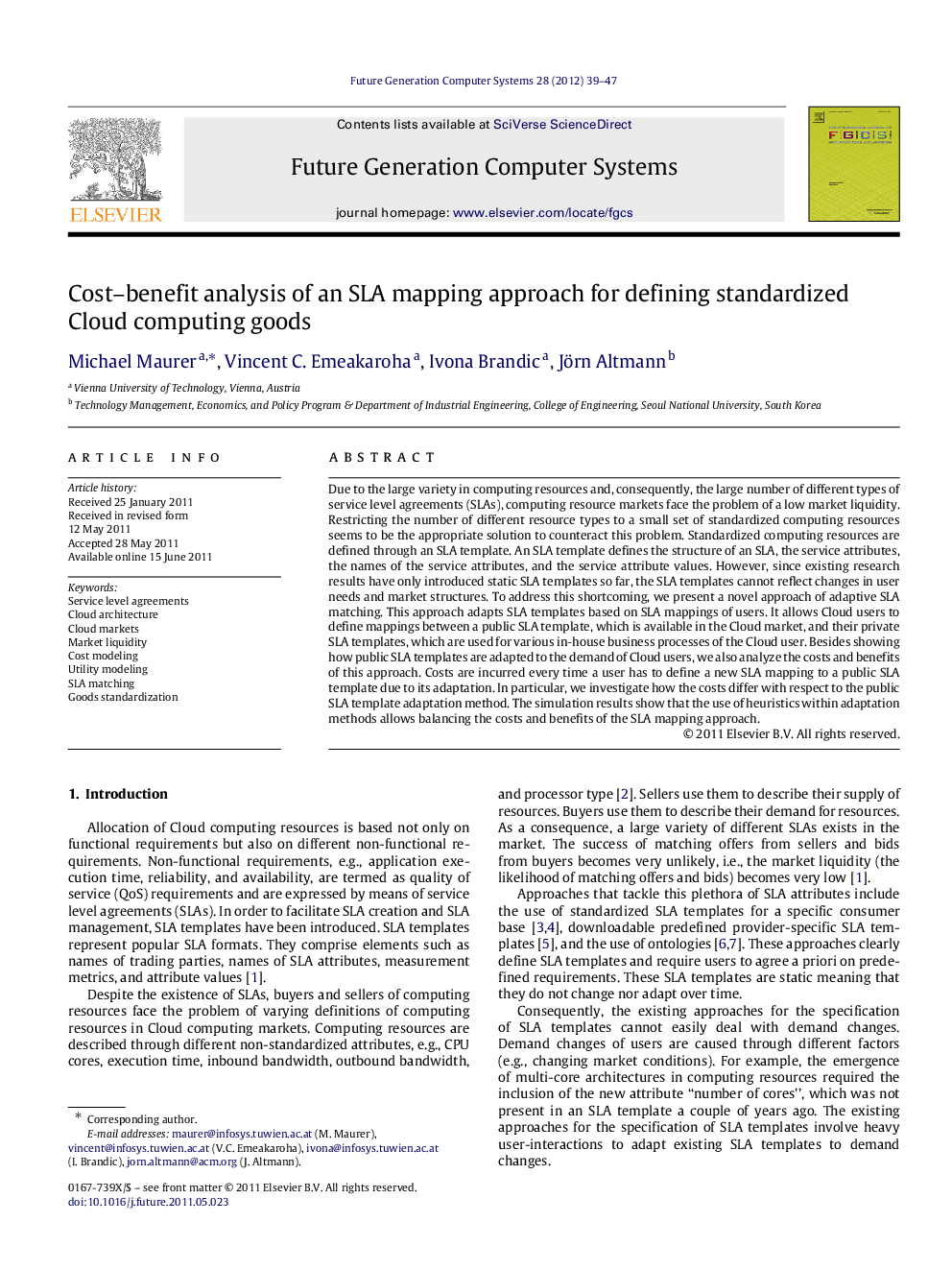| کد مقاله | کد نشریه | سال انتشار | مقاله انگلیسی | نسخه تمام متن |
|---|---|---|---|---|
| 426118 | 686000 | 2012 | 9 صفحه PDF | دانلود رایگان |

Due to the large variety in computing resources and, consequently, the large number of different types of service level agreements (SLAs), computing resource markets face the problem of a low market liquidity. Restricting the number of different resource types to a small set of standardized computing resources seems to be the appropriate solution to counteract this problem. Standardized computing resources are defined through an SLA template. An SLA template defines the structure of an SLA, the service attributes, the names of the service attributes, and the service attribute values. However, since existing research results have only introduced static SLA templates so far, the SLA templates cannot reflect changes in user needs and market structures. To address this shortcoming, we present a novel approach of adaptive SLA matching. This approach adapts SLA templates based on SLA mappings of users. It allows Cloud users to define mappings between a public SLA template, which is available in the Cloud market, and their private SLA templates, which are used for various in-house business processes of the Cloud user. Besides showing how public SLA templates are adapted to the demand of Cloud users, we also analyze the costs and benefits of this approach. Costs are incurred every time a user has to define a new SLA mapping to a public SLA template due to its adaptation. In particular, we investigate how the costs differ with respect to the public SLA template adaptation method. The simulation results show that the use of heuristics within adaptation methods allows balancing the costs and benefits of the SLA mapping approach.
► A medical imaging use case exemplifies adapting standardized SLA templates.
► We show how SLA templates adapt to dynamic changes of the needs of market participants.
► We present three adaptation methods based on user-supplied SLA mappings.
► We present a cost–benefit analysis of adapting standardized SLA templates.
► A cautious adaptation method increases the net utility for market participants.
Journal: Future Generation Computer Systems - Volume 28, Issue 1, January 2012, Pages 39–47